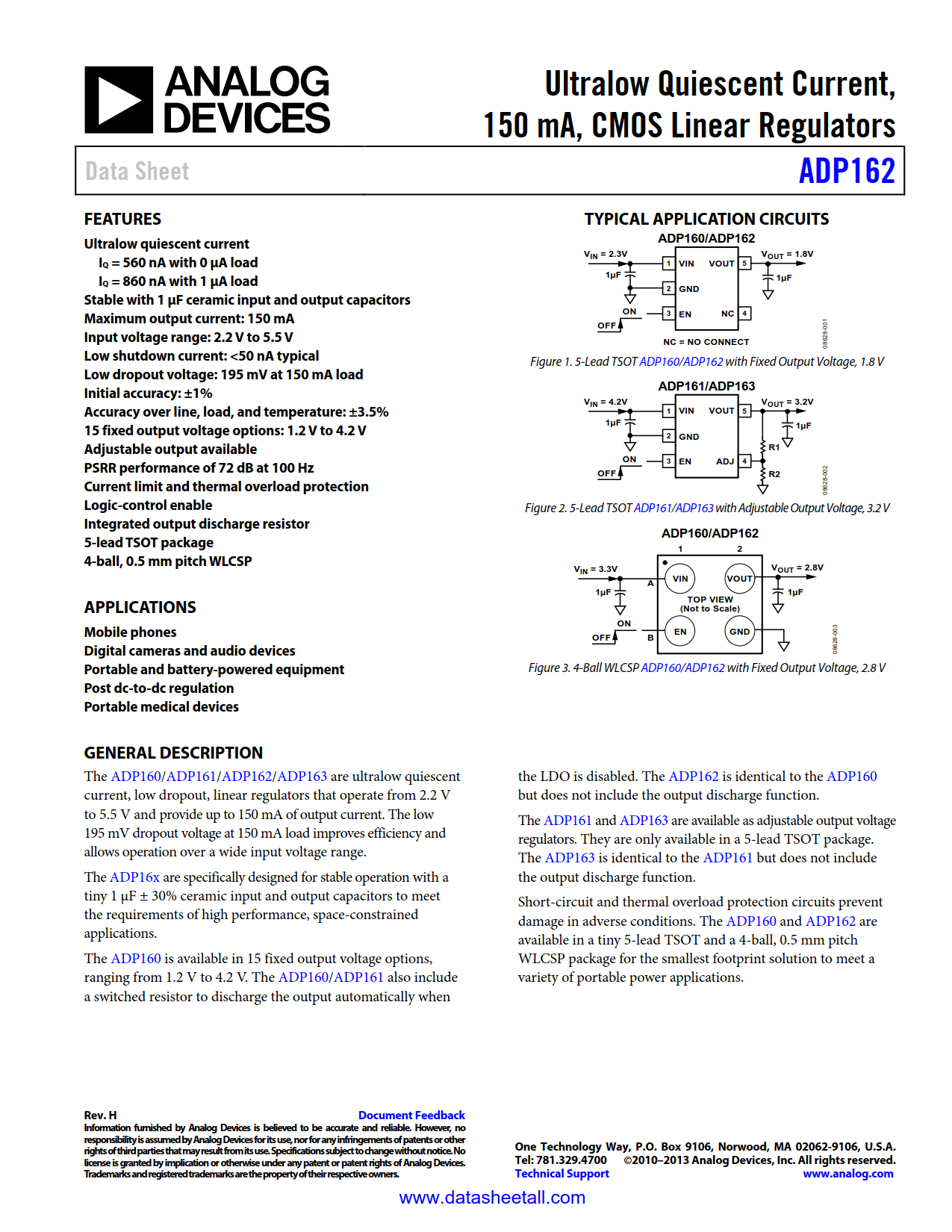
ADP162 Datasheet
Ultralow Quiescent Current, 150 mA, CMOS Linear Regulators

Ultralow Quiescent Current, 150 mA, CMOS Linear Regulators
| Part No. | In Stock | Price | Packaging | SPQ | Marking | MSL | Pins | Temp Range | Package Description |
The ADP162 are ultralow quiescent current, low dropout, linear regulators that operate from 2.2 V to 5.5 V and provide up to 150 mA of output current. The low 195 mV dropout voltage at 150 mA load improves efficiency and allows operation over a wide input voltage range.
The ADP162 are specifically designed for stable operation with tiny 1 μF ± 30% ceramic input and output capacitors to meet the requirements of high performance, space-constrained applications.
The ADP162 is identical to the ADP160 but does not include the output discharge function. They are only available in a 5-lead TSOT package.
Short-circuit and thermal overload protection circuits prevent damage in adverse conditions. The ADP162 are available in a tiny 5-lead TSOT and a 4-ball, 0.5 mm pitch WLCSP package for the smallest footprint solution to meet a variety of portable power applications.